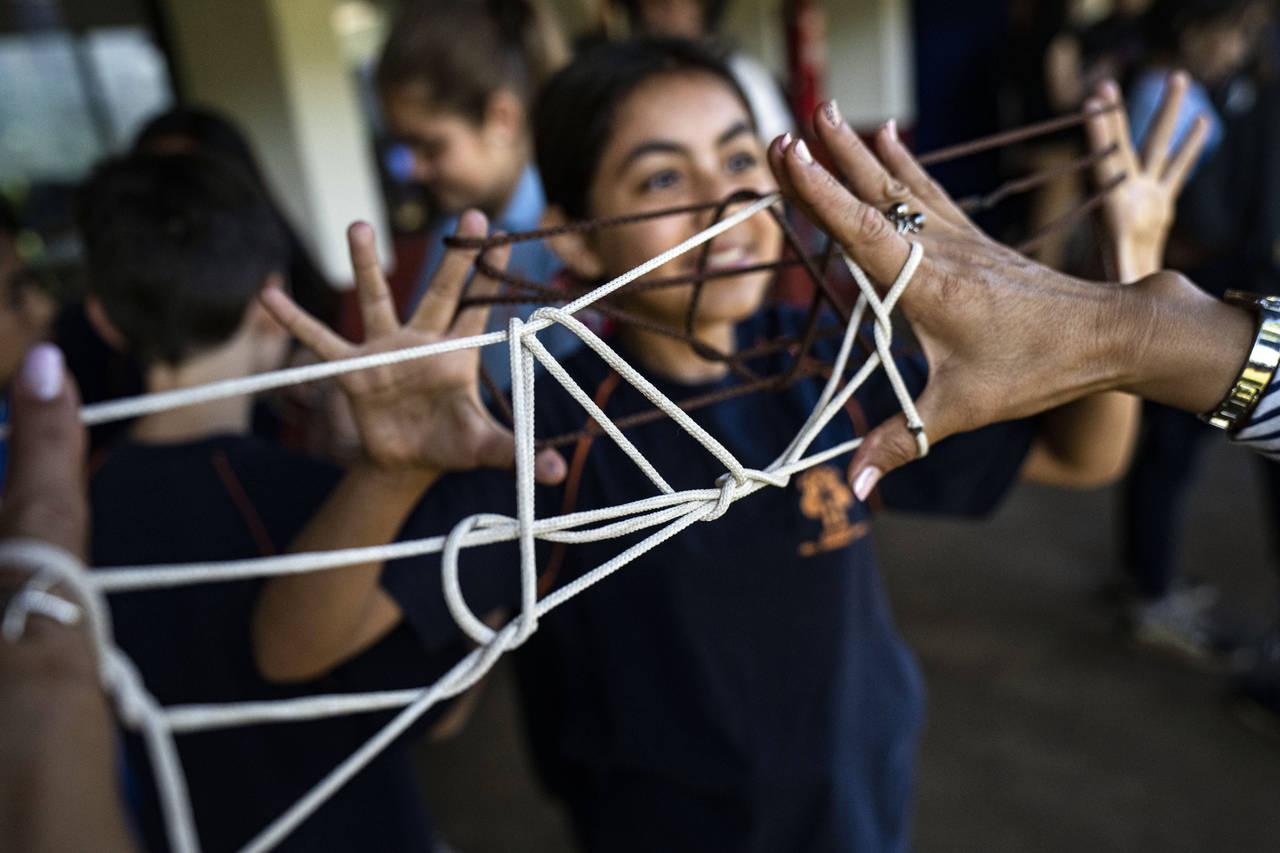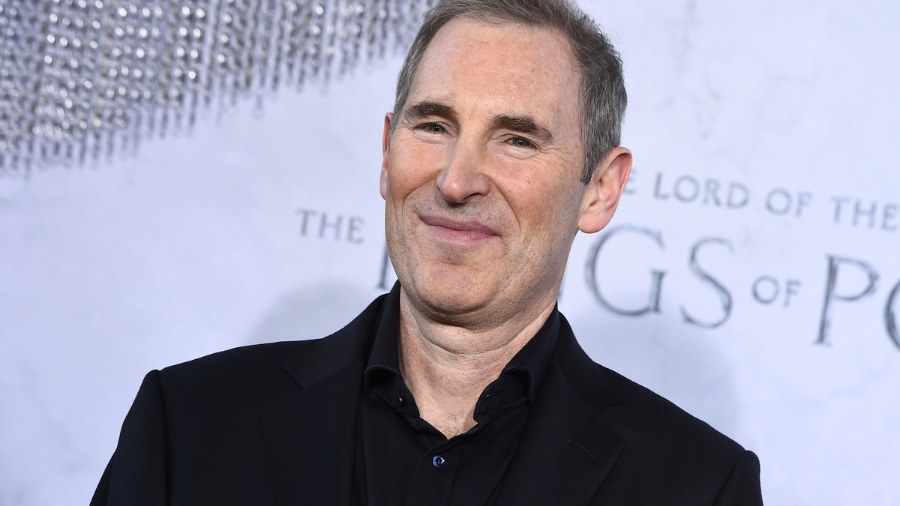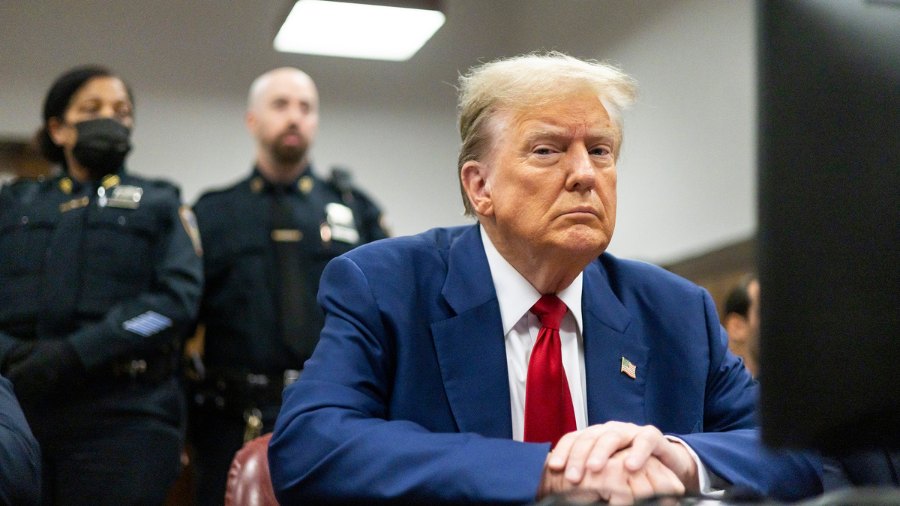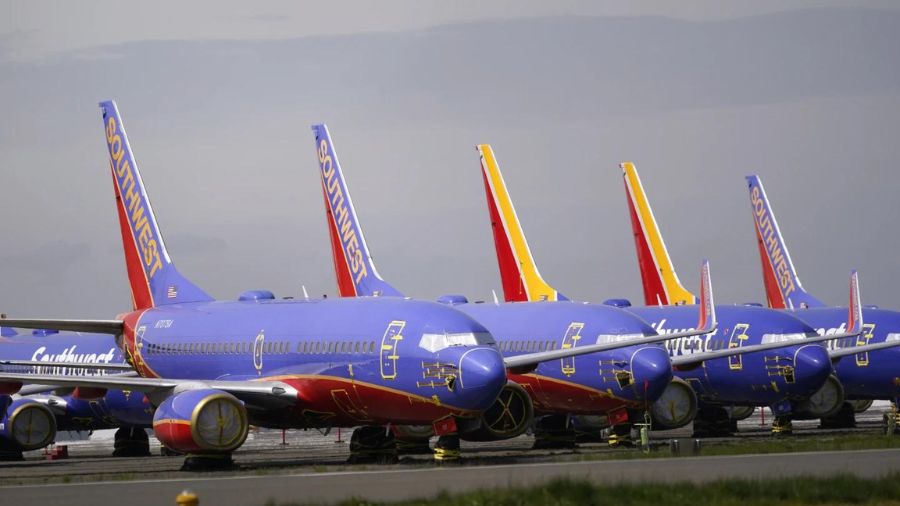Easter Island rebounds from wildfire that singed its statues
Dec 15, 2022, 3:40 PM | Updated: Dec 16, 2022, 5:46 am

Rapanui history teacher Kava Calderon teaches a 5th year elementary school student the Kai Kai, an ancestral practice that consists in shaping an ideogram with string that contains stories at the Eugenio Eyraud Catholic school in Hanga Roa, Rapa Nui, or Easter Island, Chile, Wednesday, Nov. 23, 2022. With no written books to preserve their legacy, the Rapanui have imprinted their people's memory in activities and traditions passed from generation to generation. (AP Photo/Esteban Felix)
(AP Photo/Esteban Felix)
RAPA NUI, Chile (AP) — The hillside of Rano Raraku volcano on Rapa Nui feels like a place that froze in time.
Embedded in grass and volcanic rock, almost 400 moai – the monolithic human figures carved centuries ago by this remote Pacific island’s Rapanui people — remained untouched until recently. Some are buried from the neck down, the heads seemingly observing their surroundings from the underground.
Around them, there has been a pervasive smell of smoke from still-smoldering vegetation – the vestige of a wildfire that broke out in early October. More than 100 moai were damaged by the flames, many of them blackened by soot, though the impact on the stone remains undetermined. UNESCO recently allocated nearly $100,000 for assessment and repair plans.
In this Polynesian territory that now belongs to Chile and is widely known as Easter Island, the loss of any moai would be a blow to ancient cultural and religious traditions. Each of the moai – the nearly 400 on the volcano and more than 500 elsewhere on the island — represents an ancestor.
The president of Rapa Nui’s council of elders, Carlos Edmunds, recalled his emotions when he learned about the fire.
“Oh, I started crying,” he said. “It was like my grandparents were burned.”
It takes a close look at a map of the Pacific to find Rapa Nui, a tiny triangle covering about 63 square miles (164 square kilometers). Home to about 7,700 people – about half of them with Rapanui ancestry — it’s one of the world’s most isolated inhabited islands. The quickest way to get there is a six-hour flight from Santiago, Chile, covering 2,340 miles. Much farther away, to the northwest, are the more populous islands of Polynesia.
The remoteness has shaped the community’s view of the world, its spirituality and culture. Its small size also plays a part: it seems everyone knows one other.
Rapa Nui was formed at least 750,000 years ago by volcanic eruptions. Its first inhabitants were sailors from Central Polynesia who gradually created their own culture. The moai were carved between the years 1000 and 1600.
The first Europeans arrived in 1722, soon followed by missionaries. Current religious activities mix ancestral and Catholic beliefs.
The arrival of outsiders had grim effects: Hundreds of Rapanui were enslaved by Peruvian raiders in 1862 and taken to South America, where many died in cruel conditions.
In 1888 Chile annexed the island and leased it to a sheep company. Only by the 20th century did the islanders begin to recover their autonomy, though there were no written Rapanui annals to recount their early history.
Without such records, the Rapanui have imprinted their people’s memory in activities and traditions passed from generation to generation. Even music is not merely music.
“You write books; we write songs,” said Jean Pakarati, head adviser of Ma’u Henua indigenous community. “Dancing is an expression and that expression is history.”
Pakarati’s duties include helping administer Rapa Nui National Park; she was shaken by the damage to moai within the park’s boundaries.
“Everything that affects archaeology, as you call it, is so important,” she told The Associated Press. “It is part of us.”
At 2 a.m. on Oct. 4, when the fire was finally controlled, those risking their safety around the burning crater were untrained volunteers using shovels and rocks, cutting down trees and branches.
The fire covered 254 hectares (about one square mile). It originated away from the volcano, on a cattle ranch, but the wind brought flames to Rano Raraku.
Each moai preserves precious information about its tribe. When an important Rapanui died, some of his bones were placed under the ceremonial platform called an ahu and his spirit had the possibility of rebirth after a craftsman carved a moai in his likeness. Thus every moai is unique, bearing a name of its own.
When the moai were carved, the island was divided according to its clans, but most of the statues were created in Rano Raraku. The ahu were built near the sea.
It is not certain how the moai – which average 13 feet (four meters) in height and weigh many tons — were transported to their ahu. One theory is that they were moved as if they were standing, dragged with small turns as one would do with a refrigerator.
Rapa Nui’s council of elders, headed by Carlos Edmunds, brings together the leaders whose predecessors were born in Rapanui tribes. Among other responsibilities, Edmunds, 69, fights for the island’s autonomy, preventing land from being sold to foreigners and insisting that certain areas are regulated only by Rapanui.
His ancestors were born in Anakena, site of a beach with white sand and transparent waters where King Hotu Matua is believed to have landed 1,000 years ago
When Chile leased the island, the foreigners who took over stripped all Rapanui tribes of their property, though several ahu and moai can still be seen on land they used to control. Edmunds recently visited the moai in Anakena that were carved by his ancestors; he says the protection of his loved ones never abandons him.
Between the arrival of Europeans and the mid-19th century, all the moai erected on platforms had been toppled, perhaps due to environmental factors or neglect. Major restoration projects and archaeological surveys, led by foreign experts, commenced in the 1960s and ’70s.
At that time, said Rapanui historian Christian Moreno, many islanders didn’t understand why foreigners were so fascinated by the statues, which no longer served a specific religious or cultural role.
Gradually, Moreno said, the community began to delve into its collective memory, talking to elders and – bit by bit — retrieving the history of the moai.
“Then the Rapanui once again understood that the moai represent the ancestors who walked through the same land that we do, who breathed the same air as us, who saw this very ocean,” Moreno said.
Now, in Rapa Nui, people can trace a family history just by knowing their last name and where the moai named after their ancestors were placed.
The mayor of Rapa Nui — serving for 25 years — is Pedro Edmunds, the brother of Carlos Edmunds. He worries about his community’s future but also has hope.
“Our daughters and sons have not lost the essence of being Rapanui and that guarantees that this culture will have a future,” he said. “We are a society that respects its environment and is tremendously protective of its culture”.
That culture includes the Rapanui language, which has only 14 letters. Yet a single word can incorporate metaphor, parable and philosophy simultaneously.
“I’ve asked many times to people from other countries: who are you? And they all tell me their names,” said Jean Pakarati. “When someone asks me that question, my answer is: ‘I am Rapanui.'”
___
Associated Press religion coverage receives support through the AP’s collaboration with The Conversation US, with funding from Lilly Endowment Inc. The AP is solely responsible for this content.
Copyright © The Associated Press. All rights reserved. This material may not be published, broadcast, rewritten or redistributed.












